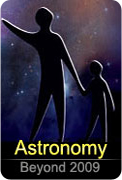Space Exploration
Is there life elsewhere? Are we alone? This question is as old as humankind itself. For millennia, people have turned their eyes to the stars and wondered if there are others like themselves out there. Does life, be it similar to our own or not, exist elsewhere in our Solar System? Our Galaxy?
Until 1992, when the first exoplanet was confirmed, it was uncertain whether there were even any planets outside those in our own Solar System. Today we know of literally hundreds of planets orbiting other stars.
Do any of these planets have conditions that would support life? What conditions favor the formation of terrestrial-class planets in developing planetary systems? NASA can help address these questions by developing missions designed to find and characterize extrasolar planetary systems.
Before we can determine if there are other planetary systems capable of supporting life, we must first find them. NASA Science pursues this goal by supporting a focused suite of ground-based observations and through the development of the Kepler mission, a space-based observatory dedicated to identifying and determining the prevalence (how many there are per star) of extrasolar planets.
NASA Science is also actively planning future space missions that will determine the masses, orbits, temperatures and atmospheric compositions of extrasolar planets with unprecedented accuracy. When we know these quantities we will be able to address the questions. ... Full Text
Challenges of Getting to Mars: Curiosity's Seven Minutes of Terror
"Today, the wheels of Curiosity have begun to blaze the trail for human footprints on Mars. Curiosity, the most sophisticated rover ever built, is now on the surface of the Red Planet, where it will seek to answer age-old questions about whether life ever existed on Mars -- or if the planet can sustain life in the future," said NASA Administrator Charles Bolden. "This is an amazing achievement, made possible by a team of scientists and engineers from around the world and led by the extraordinary men and women of NASA and our Jet Propulsion Laboratory. President Obama has laid out a bold vision for sending humans to Mars in the mid-2030's, and today's landing marks a significant step toward achieving this goal."
Read More: NASA Lands Car-Size Rover Beside Martian Mountain
( View Video: Curiosity's Seven Minutes of Terror)
NASA's Kepler mission has confirmed its first planet in the "habitable zone,"

